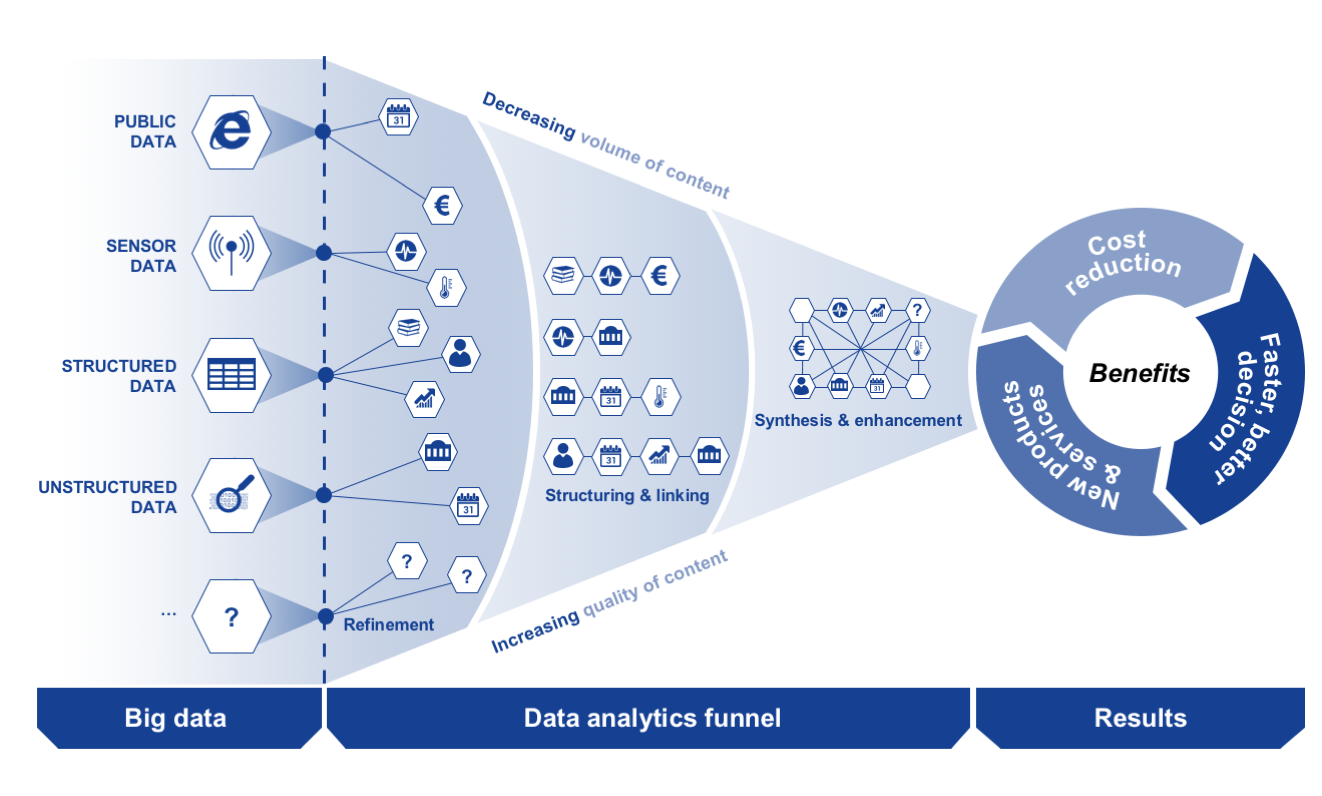AI vs. Enigma: How Modern Computing Could Crack WWII's Toughest Code in Minutes
In the annals of military history and cryptography, few stories capture the imagination quite like the cracking of Nazi Germany's Enigma code during World War II. What was once considered virtually unbreakable, a complex electromechanical puzzle that demanded the collective genius of thousands and fundamentally altered the course of the war, now faces a starkly different reality when viewed through the lens of modern technology. Experts suggest that today's artificial intelligence models, like those powering large language models, could potentially decrypt Enigma messages in mere minutes, a task that took years of painstaking effort and innovation during the conflict.
This striking contrast serves as a powerful illustration of the exponential growth in computational power and algorithmic sophistication over the past eight decades. It's not just about faster machines; it's about entirely new approaches to problem-solving that were unimaginable in the 1940s. To truly appreciate this technological leap, we must first understand the Enigma machine itself and the monumental challenge it presented to the Allied forces.
The Enigma Machine: A Mechanical Marvel of Complexity
Developed in the early 20th century for commercial use, the Enigma machine was adopted and significantly enhanced by the German military in the years leading up to World War II. Its purpose was to encrypt sensitive communications, ensuring that military commands, strategic plans, and logistical details remained secret from enemy eyes. At its core, Enigma was an electromechanical rotor cipher machine.
Imagine a typewriter connected to a complex electrical circuit. When a key was pressed, an electrical signal traveled through a series of components – notably, a set of rotors, a reflector, and often a plugboard – before illuminating a different letter on a lampboard. This illuminated letter was the encrypted character.
The genius and complexity of Enigma lay in its ability to produce a continuously shifting cipher. Each time a key was pressed, one or more of the rotors would advance, changing the electrical path and thus the substitution alphabet. Pressing the letter 'A' multiple times would likely result in a different encrypted letter each time (e.g., 'A' might become 'X', then 'Q', then 'Z', and so on). This dynamic substitution made simple frequency analysis, a common method for breaking static substitution ciphers, ineffective.
Key Components of the Enigma Machine:
- Keyboard: Standard QWERTY layout for inputting plaintext letters.
- Lampboard: A display with 26 lamps, each representing a letter. The encrypted letter would light up.
- Rotors (Walzen): The heart of the machine. A set of rotating discs, each with 26 electrical contacts on either side, wired internally to perform a substitution. The order of the rotors, their initial positions, and which set of rotors was used were part of the daily key settings. Military Enigmas typically had 3 to 5 rotors available, from which a subset (usually 3) was chosen and placed in a specific order.
- Reflector (Umkehrwalze): A unique feature of Enigma. Unlike other rotor machines, the reflector sent the electrical signal back through the rotors via a different path. This ensured that encryption was reciprocal (if A encrypts to B, then B encrypts to A), which simplified operation (the same machine could encrypt and decrypt) but also introduced a critical weakness: no letter could ever encrypt to itself.
- Plugboard (Steckerbrett): Introduced in later military models, this significantly increased complexity. Cables were used to swap pairs of letters before and after they passed through the rotors. For example, if 'A' was plugged to 'P', any 'A' pressed on the keyboard would enter the rotors as a 'P', and any 'P' emerging from the rotors would be output as an 'A'. This added a layer of substitution that dramatically increased the number of possible configurations.
The security of Enigma relied not on the secrecy of the machine's design (which was eventually compromised) but on the enormous number of possible configurations, determined by the daily key settings. These settings included the choice and order of rotors, their starting positions, the reflector type, and the plugboard connections. The sheer number of permutations was staggering, making brute-force attacks seemingly impossible with the technology of the time.
The Historical Race to Crack Enigma
The challenge posed by Enigma was recognized early on. Its potential to shroud German communications in secrecy was a significant threat to any opposing force. The race to break the code began even before the war officially started.
The Polish Breakthrough
Contrary to popular belief that credits the British entirely, the first significant breakthroughs against Enigma were made by Polish mathematicians from the Polish Cipher Bureau. Led by Marian Rejewski, with Jerzy Różycki and Henryk Zygalski, this brilliant team managed to reconstruct the internal wiring of the military Enigma machine in 1932, years before the war. They achieved this using advanced mathematical and statistical methods, combined with crucial intelligence information provided by a French spy.
The Polish team developed several techniques and devices to aid decryption, including the 'cyclometer' (Rejewski's device for calculating rotor permutations) and 'Zygalski sheets' (perforated sheets used to find rotor starting positions). Their most famous invention was the 'bomba' (Polish for 'bomb'), an electromechanical device designed to find the daily rotor settings by cycling through possibilities and checking for contradictions based on known plaintext patterns (cribs).
However, German security improvements, particularly the introduction of the plugboard and an increased number of available rotors, made the Polish methods and their bomba increasingly difficult and expensive to use effectively. Recognizing the impending conflict and the limitations of their resources, the Polish Cipher Bureau shared their knowledge and techniques with their British and French counterparts in a crucial meeting in July 1939, just weeks before the invasion of Poland.
Bletchley Park: The Hub of Codebreaking
The intelligence shared by the Poles proved invaluable to the British effort centered at Bletchley Park, a country estate northwest of London that became the secret hub of Allied codebreaking. Here, a diverse group of mathematicians, linguists, chess champions, and engineers worked tirelessly under immense pressure.
Among the most prominent figures at Bletchley Park was Alan Turing, a visionary mathematician often considered the father of theoretical computer science and artificial intelligence. Building upon the Polish bomba concept, Turing and his team, including Gordon Welchman, designed and built a more advanced and powerful machine, also called the 'bombe'.
The British bombe was a much larger and more sophisticated electromechanical device. Its primary function was to deduce the daily Enigma settings, particularly the rotor order, rotor settings, and plugboard connections. It worked by automating the process of testing potential settings against 'cribs' – assumed pieces of plaintext corresponding to known ciphertext. For example, a common crib might be the German word 'WETTERBERICHT' (weather report) or standard message preambles. The bombe would rapidly cycle through thousands of possible settings, eliminating those that produced illogical results based on the crib, until only a few possibilities remained for human analysts to test.
The operation at Bletchley Park grew to an enormous scale, employing nearly 10,000 people by the war's end, a significant portion of whom were women who operated the bombes and performed crucial analytical tasks. The work was arduous, repetitive, and highly secretive. Decrypting a single day's Enigma traffic required finding the daily key settings, which could take many hours of bombe time and human analysis. Once the key was found, all messages sent on that key for that day could be read.
The intelligence derived from these decrypted messages, codenamed 'Ultra', provided the Allies with unprecedented insights into German military operations, including U-boat movements in the Atlantic, troop deployments, and strategic intentions. This intelligence is widely credited by historians with significantly shortening the war and saving countless lives.
The Technical Challenges of WWII Codebreaking
Why was cracking Enigma such a monumental task in the 1940s? Several factors contributed to its formidable security at the time:
- Combinatorial Complexity: The number of possible daily key settings was astronomical. With multiple rotors to choose from, their order, their starting positions (26^3 possibilities), the reflector type, and the plugboard connections (which could swap up to 13 pairs of letters), the total number of possible configurations was in the order of 10^18. Testing every single possibility was computationally infeasible.
- Dynamic Encryption: The rotor movement meant that the substitution alphabet changed with every single letter encrypted. This defeated static analysis methods.
- Daily Key Changes: The Germans changed the entire key setting every day. This meant that even if the codebreakers cracked one day's traffic, they had to start almost from scratch the next day.
- Operational Procedures: German operating procedures, while sometimes flawed (providing cribs), were designed to enhance security. Initial message keys were sent twice, for instance, which inadvertently provided a crucial weakness exploited by the Poles. Later procedures were tightened.
- Technological Limitations: The codebreakers of the 1940s relied on electromechanical devices like the bombe. These machines were marvels of engineering for their time, but they were slow, expensive, and prone to mechanical failure compared to modern electronic computers. They performed specific, hardwired tasks (like simulating Enigma's electrical paths) rather than being general-purpose programmable machines.
- Human Resources: The process required not just machines but also massive human effort for setup, operation, analysis, traffic analysis, and exploiting cribs. It was a labor-intensive process.
Cracking Enigma was less about pure brute force and more about brilliant cryptanalytic insight combined with engineering ingenuity to build machines that could automate parts of the search for the key settings, leveraging any operational or structural weaknesses discovered.
Today's AI Overpowers Enigma
Fast forward to the 21st century. The computational landscape has been utterly transformed by the digital revolution, microprocessors, and the advent of artificial intelligence. The challenges that made Enigma formidable in the 1940s are trivial for modern computing systems.
Michael Wooldridge, a professor of computer science and an AI specialist at Oxford University, recently highlighted this disparity. He told The Guardian that the Enigma code “would not remotely be a match” for contemporary computing capabilities, including AI systems like ChatGPT.
Why is this the case?
Firstly, raw processing power has increased by many orders of magnitude. A modern laptop or even a smartphone possesses computational power that dwarfs the combined capabilities of all the bombes at Bletchley Park. Tasks that took hours or days for electromechanical machines can be completed in milliseconds.
Secondly, modern algorithms and software are vastly more flexible and powerful than the hardwired logic of the bombe. An AI system or even a standard computer program could easily simulate the workings of an Enigma machine and its millions of configurations at incredible speed.
Mustafa A Mustafa, a senior lecturer in software security at the University of Manchester, echoes this sentiment, noting that while cracking Enigma was an extraordinary feat historically, it is “trivial by today’s technological standards.” He points out that the historical effort took “months — more than a year — for them to do it back then,” emphasizing the scale of the achievement in its context.
How Modern AI Could Crack Enigma:
- Brute Force at Scale: While infeasible in the 1940s, modern computers could potentially brute-force a significant portion of the Enigma key space, especially if combined with known plaintext or statistical probabilities. The number of operations required, though large, is well within the capabilities of modern processors or clusters.
- Advanced Simulation: Software can perfectly simulate the Enigma machine's mechanics and electrical pathways. An AI could rapidly test millions or billions of potential key settings against a piece of ciphertext, looking for plausible plaintext outputs.
- Statistical Analysis and Machine Learning: Modern AI excels at pattern recognition and statistical analysis. Even without known cribs, an AI could analyze large volumes of Enigma ciphertext, look for statistical anomalies, patterns introduced by the reflector (no letter encrypts to itself), or regularities in message structure or traffic flow. Machine learning models could be trained on simulated Enigma traffic to predict key settings or plaintext.
- Leveraging Weaknesses: The known weaknesses of Enigma, such as the reflector property or flaws in operating procedures (like sending the message key twice), could be exploited algorithmically with extreme efficiency by modern software.
- Speed and Automation: The entire process, from testing settings to identifying potential plaintexts, could be automated and executed at speeds unimaginable in the 1940s. What took hours of bombe time and human effort could be reduced to seconds or minutes.
Consider the difference: the bombe was designed to automate a specific search process based on cryptanalytic insights. Modern AI, particularly in the context of powerful computing hardware, can not only replicate that process much faster but also apply more sophisticated statistical, pattern-matching, and optimization techniques that weren't available or even conceived of during WWII.
The Legacy and the Lesson
The fact that modern AI could easily break Enigma does not diminish the incredible achievement of the WWII codebreakers. Their work was done under wartime conditions, with limited technology, against a constantly evolving target. It required unparalleled intellectual effort, ingenuity, and collaboration. The story of Bletchley Park, the Polish mathematicians, Alan Turing, and the thousands of men and women who worked there remains one of the most inspiring examples of how human intellect and perseverance can overcome seemingly insurmountable technical challenges.
Their success was not a foregone conclusion; it was the result of brilliant minds applying novel mathematical and engineering principles to a problem of immense national and international importance. The bombe, in particular, can be seen as a precursor to modern computing, a machine designed to perform complex logical operations automatically.
The comparison between the WWII effort and modern AI capabilities highlights the astonishing pace of technological advancement. It underscores how quickly what was once cutting-edge security can become vulnerable to future computational power. This has profound implications for modern cryptography and cybersecurity. Today's encryption standards, which rely on mathematical problems that are computationally infeasible for current computers to solve (like factoring large numbers or discrete logarithms), must constantly evolve to stay ahead of increasing processing power and the potential threat of quantum computing.
The story of Enigma and its eventual defeat by human ingenuity, now contrasted with the effortless power of modern AI, serves as a powerful reminder of the dynamic nature of the arms race between codemakers and codebreakers. It is a testament to the historical impact of cryptography and cryptanalysis and a clear indicator of the transformative power of computing and artificial intelligence in the modern era. The monumental task of cracking Enigma, a feat that helped save the world, stands as a historical benchmark against which we can measure the incredible capabilities of the technology we wield today.
The women who worked at Bletchley Park, often overlooked in historical accounts, played a vital role in operating the bombes and performing crucial analytical work. Their contribution was indispensable to the success of the codebreaking effort, further emphasizing the scale and human element of this historical challenge.
In conclusion, while the Enigma machine represented the pinnacle of cryptographic technology in its time, and its cracking was a heroic, war-altering achievement, the capabilities of modern AI and computing have rendered its secrets easily accessible. This comparison is not a critique of the past but a powerful demonstration of the relentless march of technological progress and the ever-evolving landscape of information security.


















